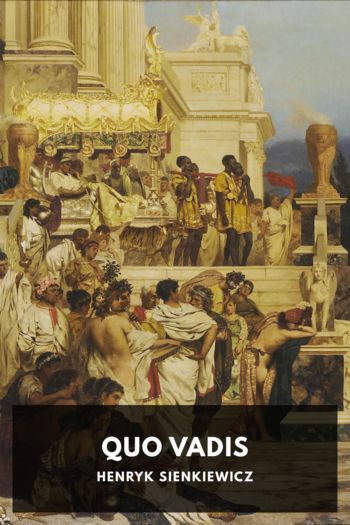The Age of Reason - Thomas Paine (read aloud books TXT) 📗

- Author: Thomas Paine
Book online «The Age of Reason - Thomas Paine (read aloud books TXT) 📗». Author Thomas Paine
The book of Matthew goes on to say (ver. 2): “And behold there was a great earthquake, for the angel of the Lord descended from heaven, and came and rolled back the stone from the door, and sat upon it.” But the other books say nothing about any earthquake, nor about the angel rolling back the stone, and sitting upon it; and, according to their account, there was no angel sitting there. Mark says the angel72 was within the sepulchre, sitting on the right side. Luke says there were two, and they were both standing up; and John says they were both sitting down, one at the head and the other at the feet.
Matthew says, that the angel that was sitting upon the stone on the outside of the sepulchre told the two Marys that Christ was risen, and that the women went away quickly. Mark says, that the women, upon seeing the stone rolled away, and wondering at it, went into the sepulchre, and that it was the angel that was sitting within on the right side, that told them so. Luke says, it was the two angels that were standing up; and John says, it was Jesus Christ himself that told it to Mary Magdalene; and that she did not go into the sepulchre, but only stooped down and looked in.
Now, if the writers of these four books had gone into a court of justice to prove an alibi, (for it is of the nature of an alibi that is here attempted to be proved, namely, the absence of a dead body by supernatural means,) and had they given their evidence in the same contradictory manner as it is here given, they would have been in danger of having their ears cropt for perjury, and would have justly deserved it. Yet this is the evidence, and these are the books, that have been imposed upon the world as being given by divine inspiration, and as the unchangeable word of God.
The writer of the book of Matthew, after giving this account, relates a story that is not to be found in any of the other books, and which is the same I have just before alluded to. “Now,” says he, (that is, after the conversation the women had had with the angel sitting upon the stone,) “behold some of the watch” (meaning the watch that he had said had been placed over the sepulchre) “came into the city, and showed unto the chief priests all the things that were done; and when they were assembled with the elders and had taken counsel, they gave large money unto the soldiers, saying, Say ye, that his disciples came by night, and stole him away while we slept; and if this come to the governor’s ears, we will persuade him, and secure you. So they took the money, and did as they were taught; and this saying” (that his disciples stole him away) “is commonly reported among the Jews until this day.”
The expression, “until this day,” is an evidence that the book ascribed to Matthew was not written by Matthew, and that it has been manufactured long after the times and things of which it pretends to treat; for the expression implies a great length of intervening time. It would be inconsistent in us to speak in this manner of anything happening in our own time. To give, therefore, intelligible meaning to the expression, we must suppose a lapse of some generations at least, for this manner of speaking carries the mind back to ancient time.
The absurdity also of the story is worth noticing; for it shows the writer of the book of Matthew to have been an exceeding weak and foolish man. He tells a story that contradicts itself in point of possibility; for though the guard, if there were any, might be made to say that the body was taken away while they were asleep, and to give that as a reason for their not having prevented it, that same sleep must also have prevented their knowing how, and by whom, it was done; and yet they are made to say that it was the disciples who did it. Were a man to tender his evidence of something that he should say was done, and of the manner of doing it, and of the person who did it, while he was asleep, and could know nothing of the matter, such evidence could not be received: it will do well enough for Testament evidence, but not for anything where truth is concerned.
I come now to that part of the evidence in those books, that respects the pretended appearance of Christ after this pretended resurrection.
The writer of the book of Matthew relates, that the angel that was sitting on the stone at the mouth of the sepulchre, said to the two Marys (28:7), “Behold Christ is gone before you into Galilee, there ye shall see him; lo, I have told you.” And the same writer at the next two verses (8, 9,) makes Christ himself to speak to the same purpose to these women immediately after the angel had told it to them, and that they ran quickly to tell it to the disciples; and it is said (ver. 16), “Then the eleven disciples went away into





Comments (0)